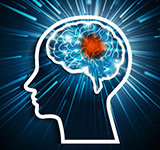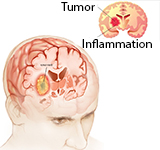An Insight into Brain Tumors
Tumors can affect the brain by destroying normal tissue, compressing normal tissue, or increasing intracranial pressure.

Medical science neither knows what causes brain tumors nor how to prevent primary tumors that start in the brain. Tumors can affect the brain by destroying normal tissue, compressing normal tissue, or increasing intracranial pressure. Symptoms vary depending on the tumor’s type, size, and location in the brain. General symptoms include,headaches that tend to worsen in the morning, seizures, difficulty in walking, speech problems (e.g. difficulty finding the right word) vision problems,weakness on one side of the body, increased intracranial pressure, which causes drowsiness, headaches, nausea and vomiting, sluggish responses.
Audiometry, endocrine evaluation, visual field, lumbar, Imaging tests, CT scan, MRI scan are useful for diagnosis.
Treatment options vary depending on the type, grade, size and location of the tumor; whether it has spread; and your age and general health. The goal of treatment may be curative or focus on relieving symptoms (palliative care). Treatments are often used in combination with one another. The goal is to remove all or as much of the tumor as possible through surgery to minimize the chance of recurrence. Radiation therapy and chemotherapy are used to treat tumors that cannot be removed by surgery alone.
Medications are used to control some of the common side effects of brain tumors.Steroids, such as dexamethasone (Decadron), are used to reduce swelling and fluid build-up (edema) around the tumor.Furosemide (Lasix) or mannitol (Osmitrol) may be used to control edema and swelling..Anticonvulsants are used to prevent or control seizures.
Surgery is the treatment of choice for brain tumors that can be reached without causing major injury to vital parts of the brain. Surgery can help to refine the diagnosis, remove as much of the tumor as possible, and release pressure within the skull. A neurosurgeon performs a craniotomy to open the skull and remove the tumor.
Radiation or chemotherapy may be used on the remaining tumor cells. Image-guided surgery technologies, tumor fluorescence, intraoperative MRI/CT, and functional brain mapping have improved the surgeon’s ability to precisely locate the tumor, define the tumor’s borders, avoid injury to vital brain areas, and confirm the amount of tumor removal while in the operating room.




